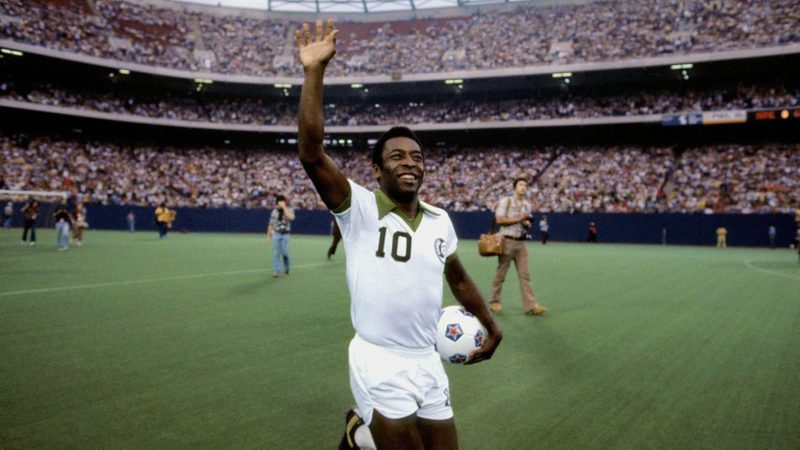
Brazilian legend Pele is one of the most influential figures in the history of football due to his innumerable achievements in the sport.
The talismanic forward, who featured among the most prolific goal-scorers of his era, passed away in December 2022 after a long battle with colon cancer.
During his two-decade-long footballing career, Pele played only for two clubs, namely Santos and New York Cosmos.
One may wonder why a player of Pele’s stature did not ply his trade for any of the European heavyweights.
The reason lies in his love for his native land Brazil, where he grew up and became a part of Santos FC as early as a 15-years-old and went on to become an icon in his 19-season stay at the club.
The three-time World Cup champion once explained, "I had many offers to sign for Madrid, Barca, Milan and Bayern, but I was happy at Santos and that’s why I stayed for 18 years," he said.
"When I left it was an experience to go to the Cosmos and promote football, do soccer clinics and learn English… if not I would never have left Brazil."
Which teams did Pele play for?
|
Team |
Tenure |
Appearances |
Goals |
|
Santos FC |
1956-1974 |
659 |
643 |
|
New York Cosmos |
1975-1977 |
107 |
66 |
|
Brazil national team |
1957-1971 |
92 |
77 |
Pele’s team names
Santos FC
Pele represented several amateur teams during his youth, gaining much-needed experience in his formative days before Waldemar de Brito, who scouted his talent during the local tournaments took him to Santos FC to try out professional football.
In June 1956, he signed a professional contract with the club after impressing the coaches during the trials. The 1957 campaign saw the teenager flourish, becoming the top scorer of the league, which also helped him receive a national call-up from Brazil.
Having starred in Brazil’s title-winning 1958 and 1962 World Cup campaigns, he attracted inevitable interest from top European teams like Real Madrid, Manchester United and Juventus. Nonetheless, he turned each one of them down.
Pele won his first major title with Santos in 1958, where he also finished as the top scorer with an astonishing 58 goals, which is a record to date.
In November 1969, Pele scored his 1000th career goal across competitions against Vasco de Gama. Hundreds raced onto the pitch to horde the Brazilian star and it, reportedly, took roughly 30 minutes for the game to resume.
Unsurprisingly, he became the talk of the town over the years, tormenting opposition defences time and again, entertaining the fans with his fine goal-scoring prowess, precise tackling and the ability to play with the same vigour with both feet.
Overall, he won a total of 25 club trophies with Santos FC in addition to immeasurable individual honours in a glittering career with the club.
New York Cosmos
In June 1975, Pele joined New York Cosmos and helped launch the 'soccer' revolution in the United States.
Having retired from national duty by then, he scored a goal on his debut for the new club in a 2-2 draw versus Dallas Tornado.
In his short tenure with the club, Pele, who was touted to be well beyond his prime days, scored 66 goals in 107 appearances for NY Cosmos, guiding them to North American Soccer League’s Soccer Bowl and Atlantic Conference Championship in 1977.
In October 1977, Pele played the final game of his career in an exhibition match against his former employers Santos. The contest ended 2-1 in Cosmos’ favour, with Pele scoring a 30-yard free-kick as his final goal of a sumptuous career.
Brazil national team
Pele featured in his first international match in July 1957 in a 2-1 loss against Argentina.
He scored his first goal in that match aged 16 years and nine months as he remains the youngest goalscorer for his country.
The ‘Black Pearl’ then won the 1958, 1962 and 1970 World Cups, becoming the player with the most World Cup triumphs.
He also features in the list of Brazil’s top scorers, with 92 goals in 77 appearances.
All-in-all, he scored 1281 goals in 1363 matches throughout his career, becoming the most lethal goal-scorer in the history of the sport. However, more than 500 of these strikes came in unofficial matches.
Furthermore, he was voted ‘Athlete of the Century’ by the International Olympic Committee (IOC) in 1999.
Photo credit: Alamy


























